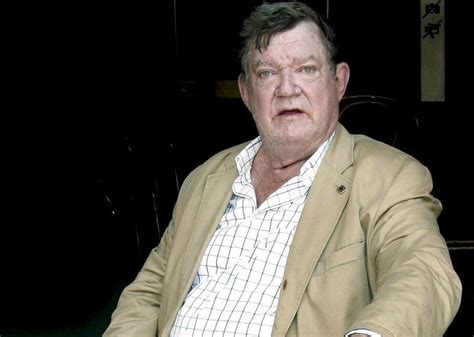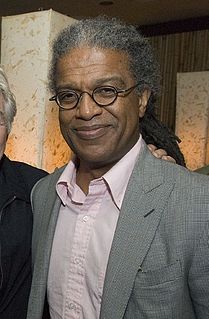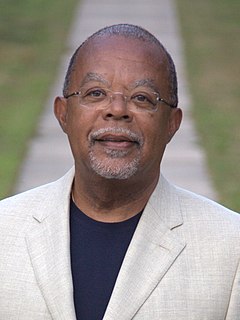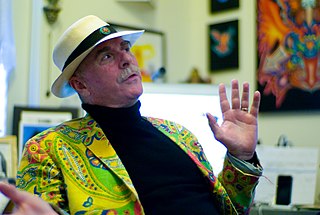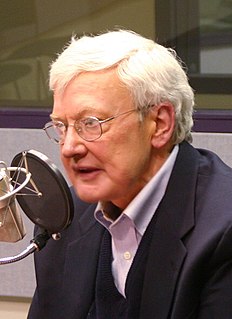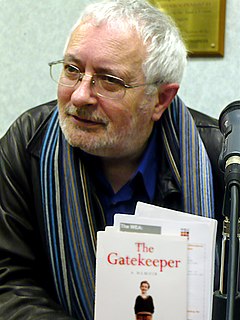Top 67 Quotes & Sayings by Robert Hughes
Explore popular quotes and sayings by an Australian critic Robert Hughes.
Last updated on April 14, 2025.
When the war (WWI) finally ended it was necessary for both sides to maintain, indeed even to inflate, the myth of sacrifice so that the whole affair would not be seen for what it was: a meaningless waste of millions of lives. Logically, if the flower of youth had been cut down in Flanders, the survivors were not the flower: the dead were superior to the traumatized living. In this way, the virtual destruction of a generation further increased the distance between the old and the young, between the official and the unofficial.
Far from affording artists continuous inspiration, mass-media sources for art have become a dead end. They have combined with the abstractness of institutional art teaching to produce a fine-arts culture given over to information and not experience. This faithfully echoes the drain of concreteness from modern existence- the reign of mere unassimilated data instead of events that gain meaning by being absorbed into the fabric of imaginative life.
The basic project of art is always to make the world whole and comprehensible, to restore it to us in all its glory and its occasional nastiness, not through argument but through feeling, and then to close the gap between you and everything that is not you, and in this way pass from feeling to meaning. It's not something that committees can do. It's not a task achieved by groups or by movements. It's done by individuals, each person mediating in some way between a sense of history and an experience of the world.
What has our culture lost in 1980 that the avant-garde had in 1890? Ebullience, idealism, confidence, the belief that there was plenty of territory to explore, and above all the sense that art, in the most disinterested and noble way, could find the necessary metaphors by which a radically changing culture could be explained to its inhabitants.
What we need more of is slow art: art that holds time as a vase holds water: art that grows out of modes of perception and making whose skill and doggedness make you think and feel; art that isn’t merely sensational, that doesn’t get its message across in ten seconds, that isn’t falsely iconic, that hooks onto something deep-running in our natures. In a word, art that is the very opposite of mass media.
Everything that would be said against the Eixample's heirs, from Le Corbusier's 'ville radieuse' to Oscar Niemeyer's Brasilia, was already said, with far less justice, about the Eixample itself. And all its critics concurred that the basic mistake was to have left the planning of a city in the hands of a socialist.
We have entered a period of intolerance which combines, as it sometimes does in America, with a sugary taste for euphemism. This conjunction fosters events that go beyond the wildest dream of satire- if satire existed in America anymore; perhaps the reason for its weakness is that reality has superseded it.
If you like your soccer cerebral, and the triumph ultimately to be wrung out of staying power, Milan was the place to be. If you love the uncertainty of teams that cannot defend yet have the courage to attack, attack, attack, then Seville was heaven... The common denominator between the victories of Arsenal and Fenerbache? The strength of mind, the courage to dare in another team's domain, the inner belief that is as much a part of sporting success as the skill a fellow may be born with.
Nevertheless, what was made in the hope of transforming the world need not be rejected because it failed to do so – otherwise, one would also have to throw out a good deal of the greatest painting and poetry of the nineteenth century. An objective political failure can still work as a model of intellectual affirmation or dissent.
The point of a library's existence is not persuasion or evangelism, but knowledge. It is irrelevant to the good library whether, as an institution, it shares or promotes your core values or mine, or the Attorney General's or Saddam Hussein's. The library is always an instrument of choice, and the choice is always yours, not your elected or designated leaders.
For the machine meant the conquest of horizontal space. It also meant a sense of that space which few people had experienced before – the succession and superimposition of views, the unfolding of landscape in flickering surfaces as one was carried swiftly past it, and an exaggerated feeling of relative motion (the poplars nearby seeming to move faster than the church spire across the field) due to parallax. The view from the train was not the view from the horse. It compressed more motifs into the same time. Conversely, it left less time in which to dwell on any one thing.
Essentially, perspective is a form of abstraction. It simplifies the relationship between eye, brain and object. It is an ideal view, imagined as being seen by a one-eyed, motionless person who is clearly detached from what he sees. It makes a God of the spectator, who becomes the person on whom the whole world converges, the Unmoved Onlooker.
